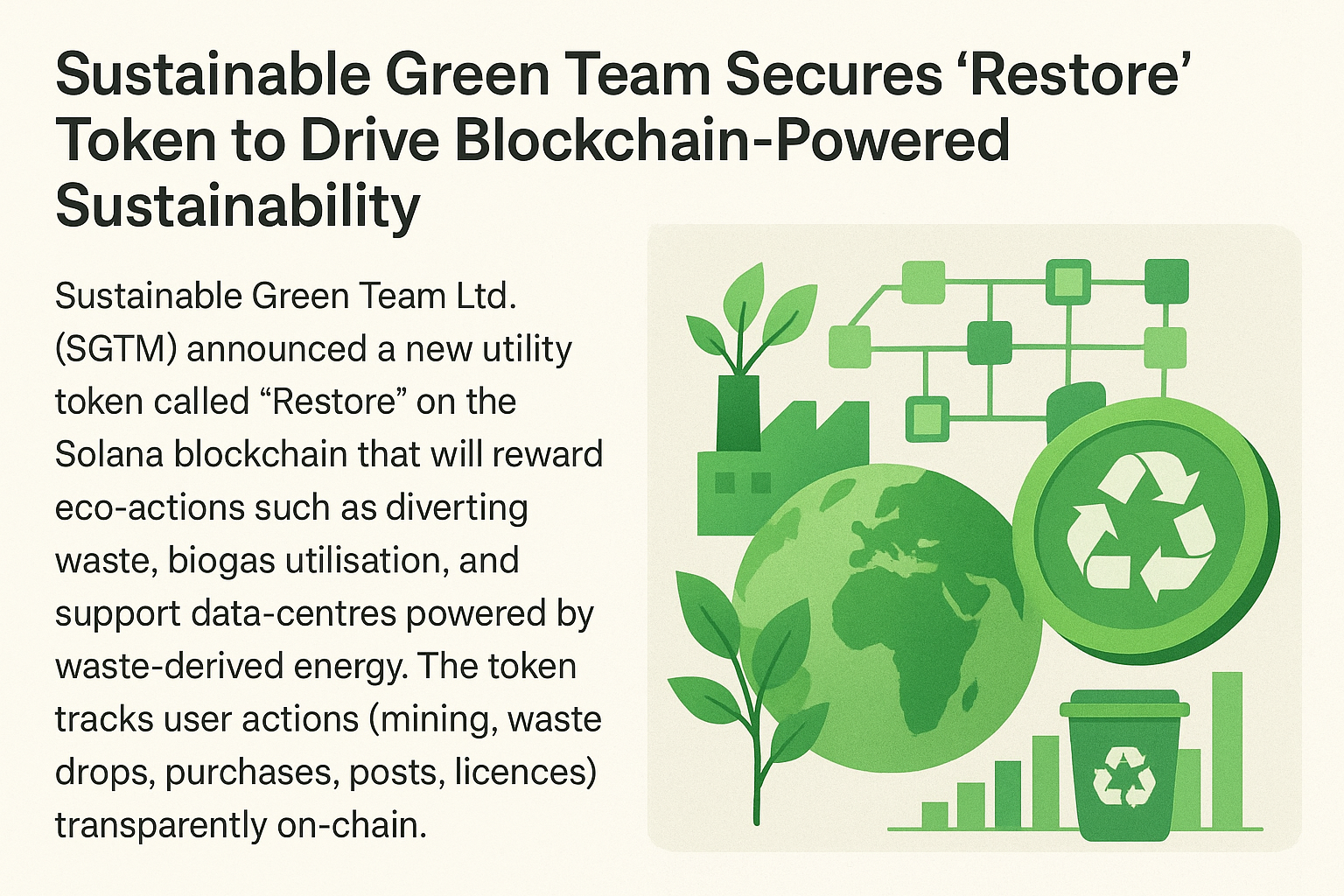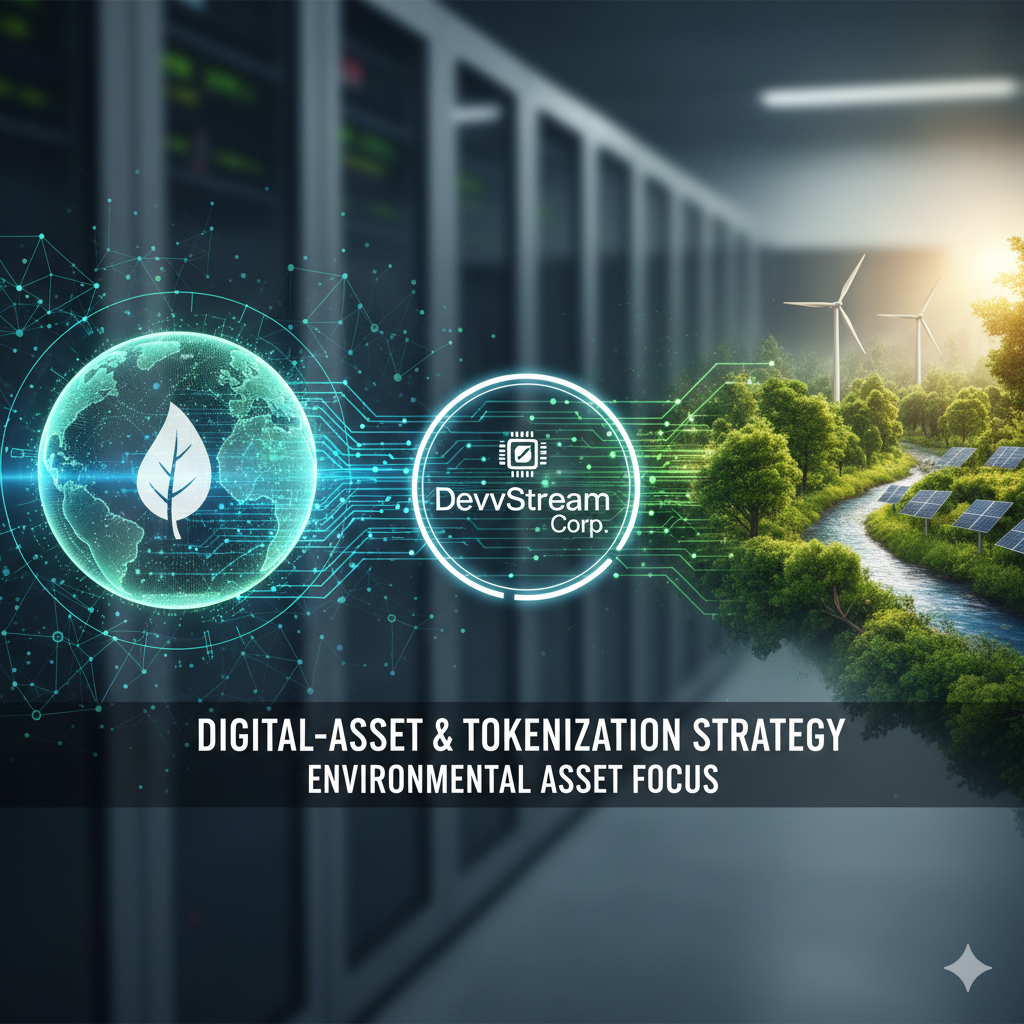In an era when sustainability and digital innovation are increasingly intertwined, the Sustainable Green Team Ltd. (SGTM) has made a bold move to bridge the two worlds. The company recently announced the launch of its “Restore” utility token on the Solana blockchain, marking a significant step toward incentivizing and transparently tracking eco-friendly behaviors through decentralized technology.
A Token That Rewards the Planet
At its core, the Restore token is designed to reward environmentally conscious actions — from diverting waste away from landfills and utilizing biogas, to supporting data centers powered by renewable energy. Unlike traditional carbon credits or green certifications, the Restore system is on-chain, providing transparency and immutability that ensure every action can be verified by anyone, anywhere.
The token aims to motivate both individuals and organizations to participate in sustainability programs by offering real, blockchain-based incentives. Users earn tokens for measurable eco-actions such as recycling drops, renewable energy generation, eco-product purchases, and social posts promoting green practices. Even businesses holding sustainability licenses or contributing to waste-to-energy programs can gain recognition and tokenized rewards.
Why Solana?
SGTM’s choice of the Solana blockchain was a deliberate one. Solana’s high transaction throughput and low carbon footprint make it an ideal platform for a sustainability-driven initiative. Unlike proof-of-work systems that require vast amounts of energy, Solana’s proof-of-stake model aligns closely with the Restore project’s environmental mission.
This ensures that every transaction — from token issuance to eco-action verification — remains both fast and energy-efficient, enhancing scalability without compromising ecological values.
Building a Green Digital Economy
The introduction of the Restore token is more than a tech experiment — it’s a move toward building a green digital economy, where environmental impact becomes an integral part of financial and data ecosystems. SGTM envisions a world where every positive action for the planet contributes to a measurable, tradeable, and transparent record of sustainability.
The project also opens doors for cross-sector collaboration. Municipalities could use Restore tokens to track waste management performance, companies could issue sustainability-based employee rewards, and communities could gamify environmental participation through blockchain-based challenges.
Waste-to-Energy Data Centers: Closing the Loop
One of the most innovative aspects of SGTM’s ecosystem is the integration of data centers powered by waste-derived energy. These facilities embody a circular economy model, turning organic and industrial waste into a sustainable power source. The energy generated supports blockchain operations, creating a self-reinforcing loop: waste fuels data centers → data centers power the blockchain → blockchain rewards waste reduction.
This model not only reduces carbon emissions but also demonstrates how digital infrastructure can directly contribute to ecological regeneration.
Transparency and Trust Through Blockchain
By leveraging blockchain’s immutable ledger, SGTM ensures that all sustainability actions are verifiable and auditable. Participants can trace every transaction — from waste diversion to token distribution — fostering trust and accountability in a space often criticized for greenwashing.
The transparency of blockchain means that users, regulators, and partners can see real-time environmental data, ensuring that the rewards system remains credible and resistant to manipulation.
A Vision for the Future
The Restore token symbolizes a growing trend where blockchain isn’t just about finance — it’s about redefining how we value impact. SGTM’s initiative aligns with a broader movement to integrate Web3 technologies into climate action, proving that sustainability and decentralization can coexist and even amplify each other.
As the world transitions toward a greener and more digital future, projects like Restore showcase what’s possible when technology serves the planet. Through the combination of renewable energy, transparent data, and community-driven incentives, SGTM’s blockchain-powered sustainability framework could become a blueprint for how industries approach environmental accountability in the years ahead.




